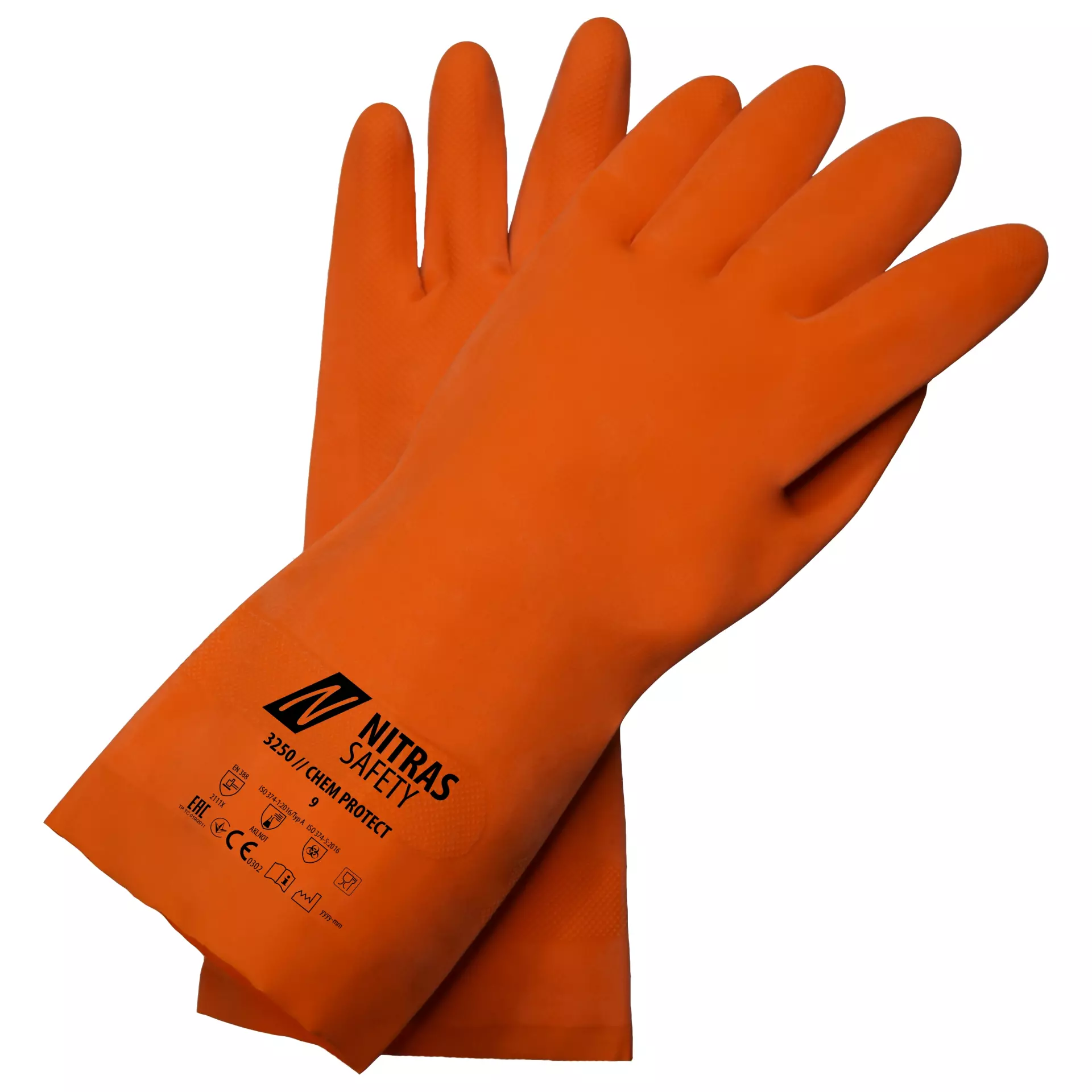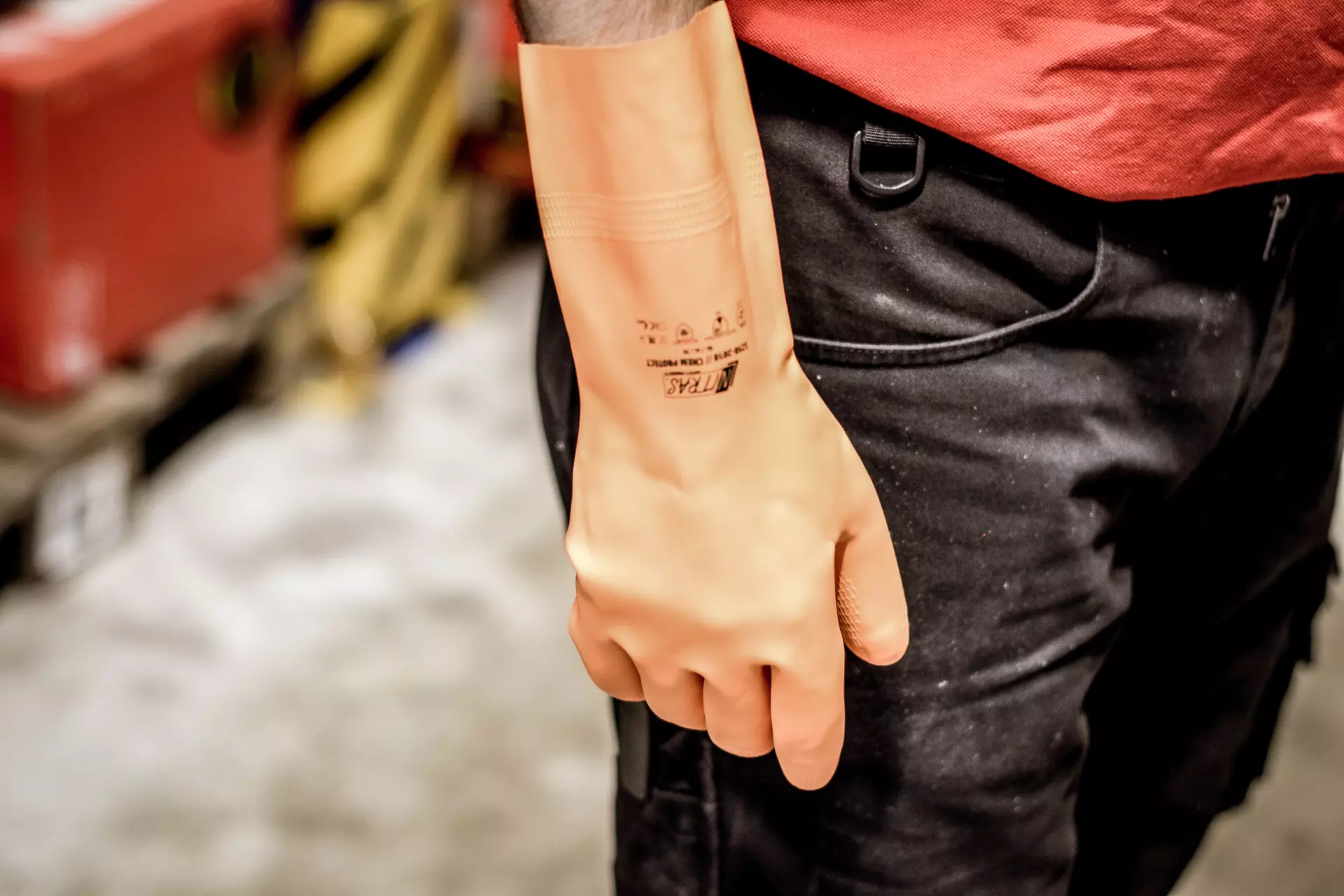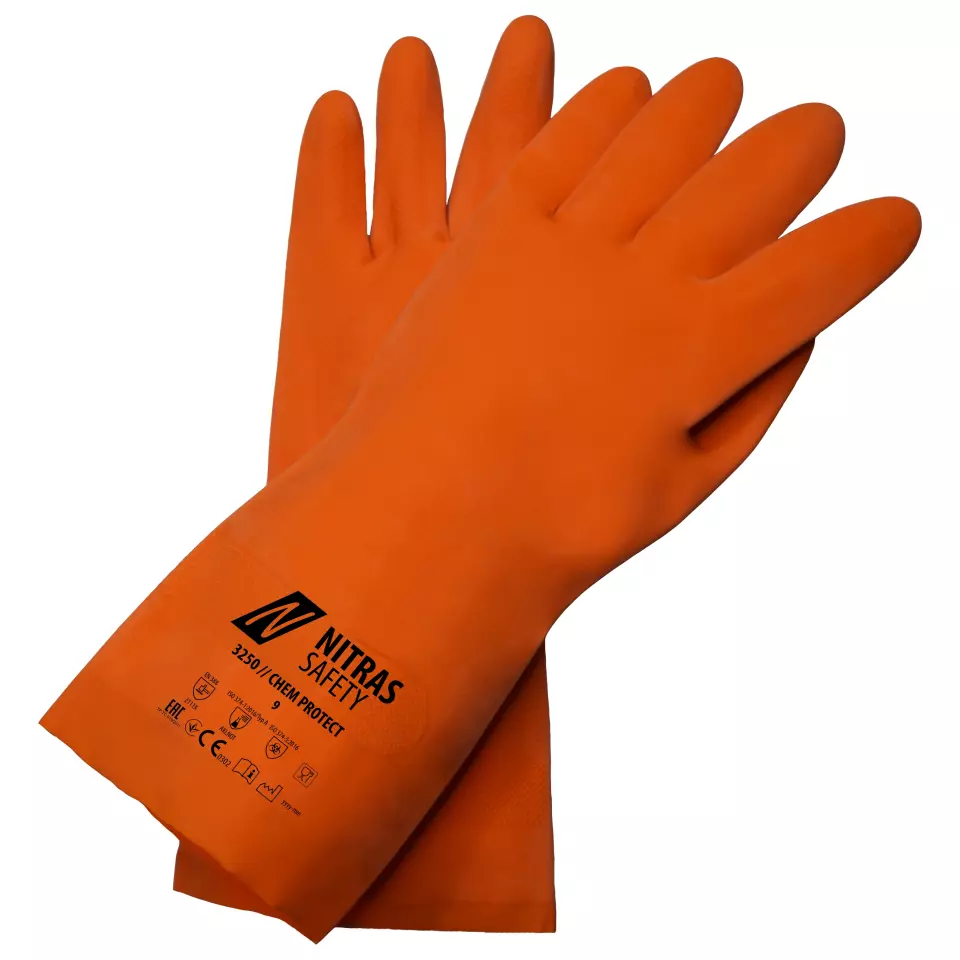

Features You'll Love

Palm Material · Latex
Grip Finish · Textured
The material used on the palm side of the glove, affecting grip, durability, protection level, and comfort during use.
The surface texture or coating on the palm and fingers that determines how securely the gloves can grip tools, materials, and surfaces during work tasks.

Cuff Style · Open
EN 388 · Puncture Resistance Level 1, Tear Resistance Level 1, Abrasion Resistance Level 2
Determines how the glove secures around the wrist, affecting fit, protection from debris, and ease of putting gloves on and taking them off.
Provides basic protection against punctures from blunt objects like splinters, not sharp points like needles.
Provides basic resistance against snagging or catching on rough surfaces, offering minimal protection from tearing.
Withstands moderate rubbing and friction, offering good protection for tasks involving handling rough materials.
Nitras
CHEM PROTECT Chemical Protective Gloves, Orange, 12 pairs
CHEM PROTECT Chemical Protective Gloves, Orange, 12 pairs
5 / 5
32,07 €
Price per 12 pairs
2,67 € / pair
Choose size
Shipping fee is 7,95 € for orders under 80,00 €
Features You'll Love

Palm Material · Latex
Grip Finish · Textured
The material used on the palm side of the glove, affecting grip, durability, protection level, and comfort during use.
The surface texture or coating on the palm and fingers that determines how securely the gloves can grip tools, materials, and surfaces during work tasks.

Cuff Style · Open
EN 388 · Puncture Resistance Level 1, Tear Resistance Level 1, Abrasion Resistance Level 2
Determines how the glove secures around the wrist, affecting fit, protection from debris, and ease of putting gloves on and taking them off.
Provides basic protection against punctures from blunt objects like splinters, not sharp points like needles.
Provides basic resistance against snagging or catching on rough surfaces, offering minimal protection from tearing.
Withstands moderate rubbing and friction, offering good protection for tasks involving handling rough materials.
Product description
These chemical protective gloves provide comprehensive protection against chemicals, micro-organisms, and bacteria while maintaining excellent dexterity with a Level 5 rating. The latex construction features a flock-lined interior for comfort and a 30cm length for extended coverage. Certified for food contact applications, these gloves offer reliable protection across multiple risk categories including chemical exposure and mechanical hazards.
Product Features:
- Flock-lined interior for enhanced comfort
- Uniform 0.7mm thickness throughout
- Extended 30cm length coverage
- Maximum dexterity rating (Level 5)
- Food contact approved
Technical Details:
- EN 388:2111X mechanical protection
- EN ISO 374-1:2016/Type A AKLNOT chemical resistance
- Chemical protection against methanol, sodium hydroxide, sulfuric acid, acetic acid, ammonium hydroxide, and formaldehyde
- Penetration and permeation tested (ISO 374-5:2016)
Standards:
- EN 388:2016+A1:2018
- EN ISO 374-1:2016/Type A
- EN ISO 374-5:2016
- EN 420:2003 + A1:2009